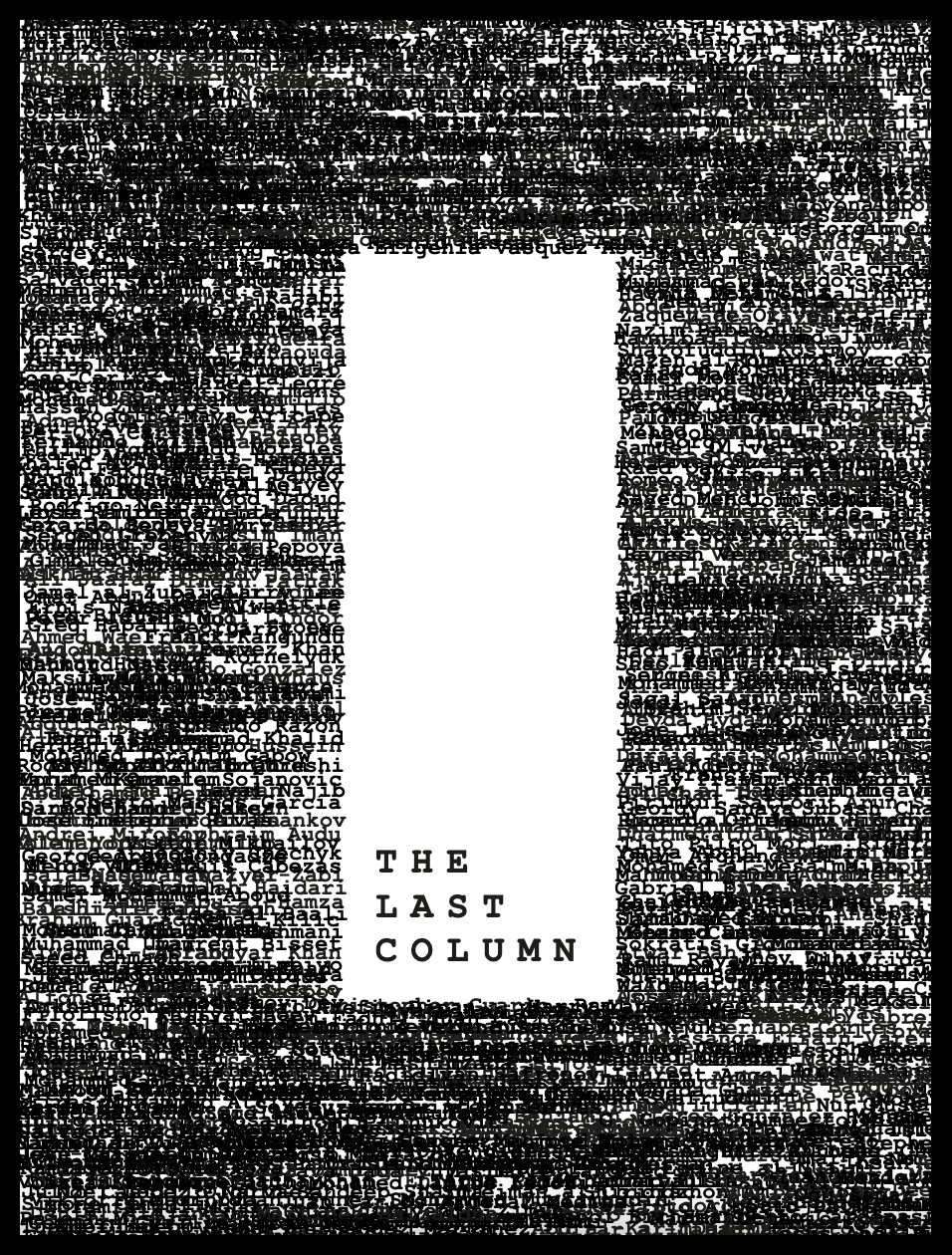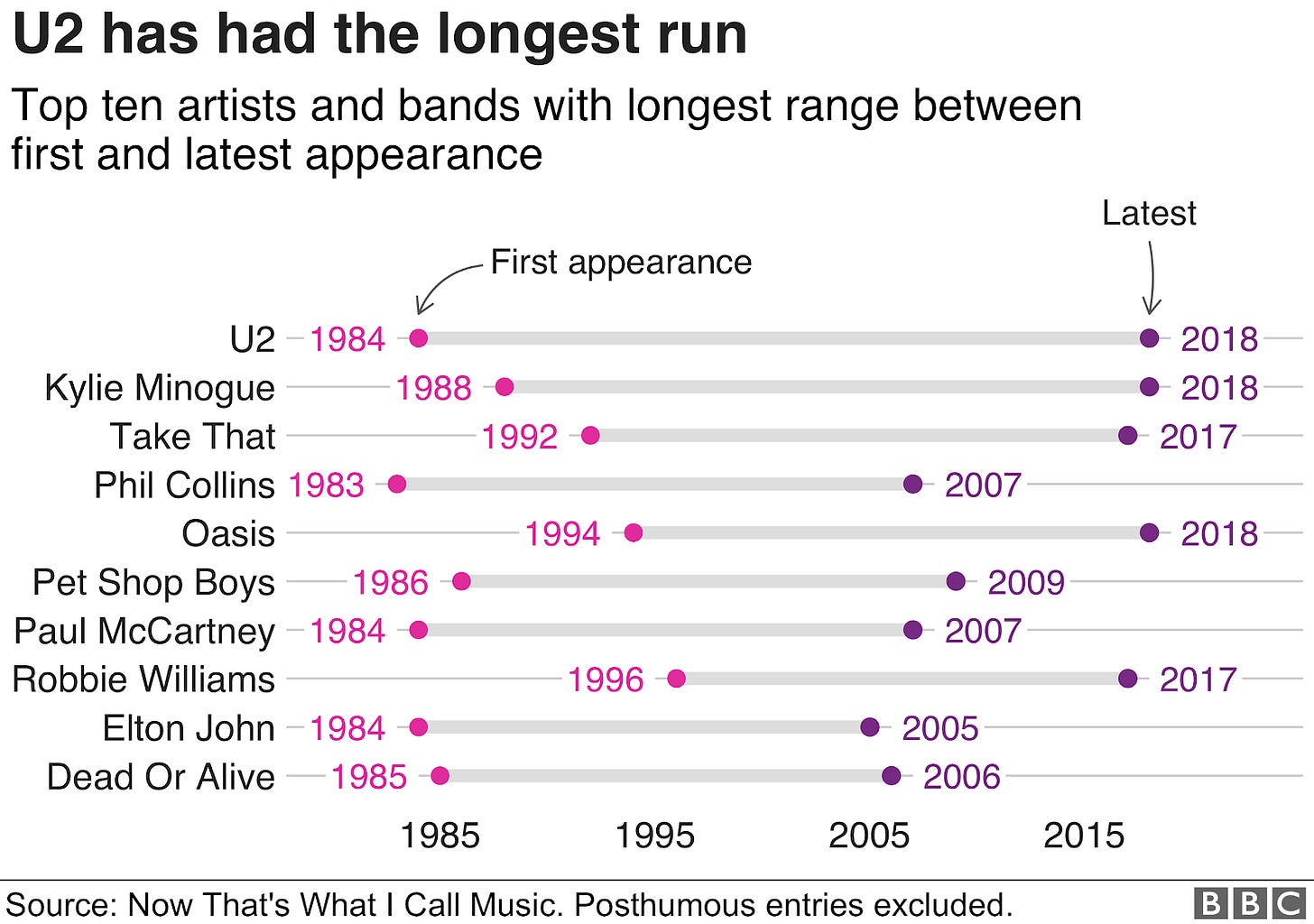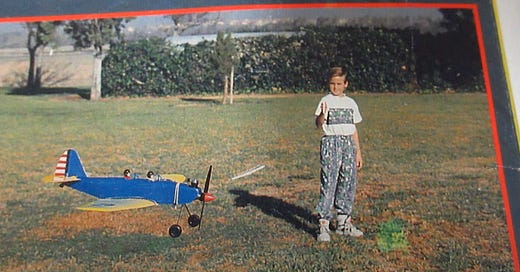
Why is this interesting? - The Last Column Edition
On press freedom, the dangers of journalism, and The Last Column
Colin here. I’ve been working on a project with my creative agency FF called The Last Column. It’s a book made up of the last articles and photographs from journalists who were killed doing their jobs. Only 2,000 copies exist, and it’s meant to raise awareness of the sacrifices journalists make reporting stories around the world. The cover design is comprised of the names of 1,337 dead journalists (1,340 since we went to press) with white space representing the words they will never write. You can watch an overview of the project that just appeared on CNN international, here.

The reason for doing this was simple: we live in a chaotic media environment where things get lost in the maelstrom of the news cycle. Everything is floating and ephemeral. Putting all of these disparate stories together and grounding them in permanent physical form is an attempt to counter this trend. Even Jamal Khashoggi, who was murdered by Saudi Arabia for being a dissenting voice, has fallen from the headlines. As Joel Simon, the head of Committee to Protect Journalists (our partner on the project) says: “Murder is the ultimate form of censorship.”
Why is this interesting?
Lest you think this is just highlighting a project, fear not. We all know that press freedom is important, but right now is a particularly dangerous time to be a journalist. Those that are reporting to provide transparency, to root out corruption, and to find the stories that those in power to want to hide, are now targets. Part of this is the rise of leaders like Duarte, Erdogan, Putin, and, sadly, current US culture, with its proclamations about fake news and thinly-veiled dog whistles that stop just short of open incitements to violence.
One of the biggest reasons more people need to hear these stories is because exposure is the best protection against the impunity those in power often operate with. According to CPJ research, nine out of ten journalist murders go unpunished. Too often the root is a lack of political will, and enlisting the public is critical to fighting for justice when journalists are killed in reprisal for their work.
And it is not always just household names from brand name networks. According to Committee to Protect Journalists:
The majority of victims are local journalists. The list includes states where instability caused by conflict and violence by armed groups has fueled impunity, as well as countries where journalists covering corruption, crime, politics, business, and human rights have been targeted and the suspects have the means and influence to circumvent justice through political influence, wealth or intimidation.
CPJ is working at every level to put pressure on the places that let these killings go unpunished. And it is incredible and noteworthy work that often happens without fanfare or thanks. So the step of even educating yourself about the cases, reading some of the stories, or donating is a step in the right direction.
Part of the solution is honoring the journalists who were killed by keeping these issues front and center in the news. Another part of is educating future journalists on how to keep themselves safe in a world where they can be intimidated physically, digitally (like the recent WhatsApp hacking), and in ways we can’t yet imagine. As Monocle editor Andrew Tuck nicely summarized: "Although some may shout ‘fake news’ from their positions of power, reporters still risk everything to find truths...we must all be thankful for their sacrifices. In an age of information excess, they cut through with stories that would otherwise never be told."
Chart of the Day:

Quick Links:
I thought this bit about the challenge of wading through an endless stream of health research was well put: “Sorting through the latest research on how to optimize your well-being is a constant and confounding feature of modern life. A scientific study becomes a press release becomes a news alert, shedding context at each stage. Often, it’s a steady stream of resulting headlines that seem to contradict one another, which makes it easy to justify ignoring them. ‘There’s so much information on chocolate, coffee, alcohol,’ says Nicholas Steneck, a former consultant to the Office of Research Integrity for the U.S. Department of Health and Human Services. ‘You basically believe what you want to believe unless people are dropping dead all over the place.’” From the New York Times Magazine on the effects of alcohol. (NRB)
A very interesting piece on Underworld where the writer becomes not only part of the story but also the song. (CJN)
Great piece on John Cazale, most famous for his role as Fredo. “The character actor only appeared in 5 movies before his death at age 42, but every single one was nominated for an Academy Award for Best Picture.” (NRB)
Per WITI 4/10/19, I’m a big library fan. Hence this list of the “New York Public Library's Top 10 Best Kept Online Secrets” is right up my alley. (NRB)
Thanks for reading,
Noah (NRB) & Colin (CJN)








